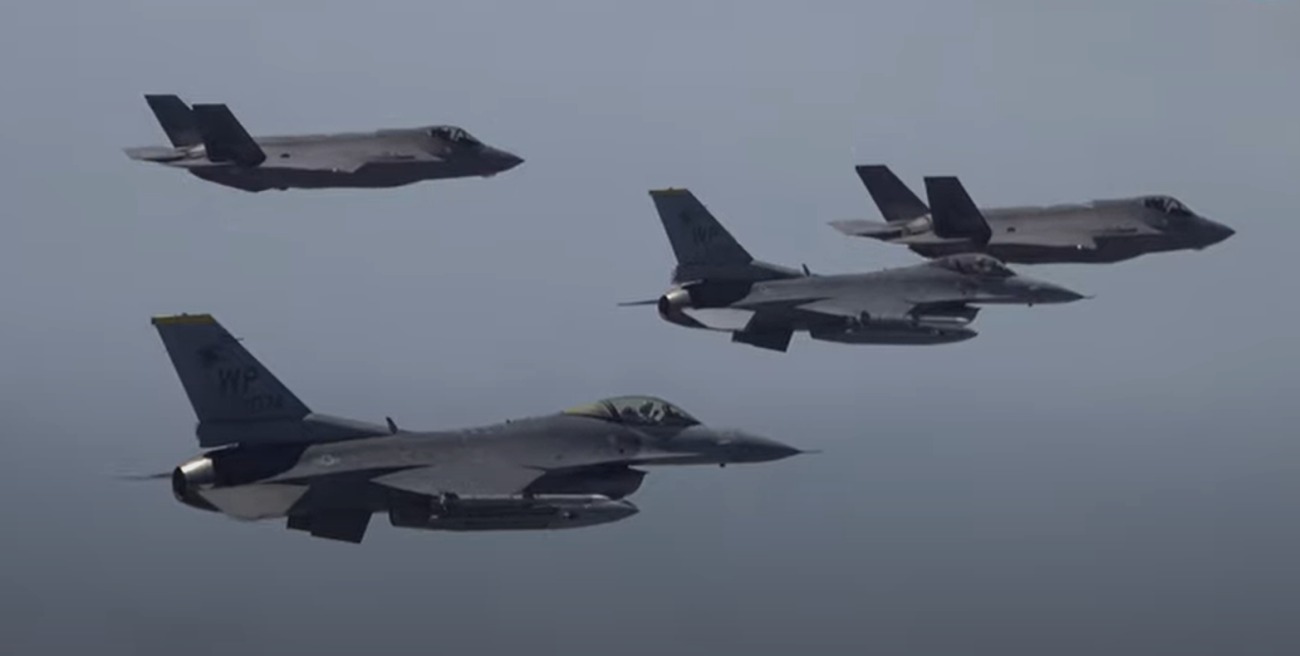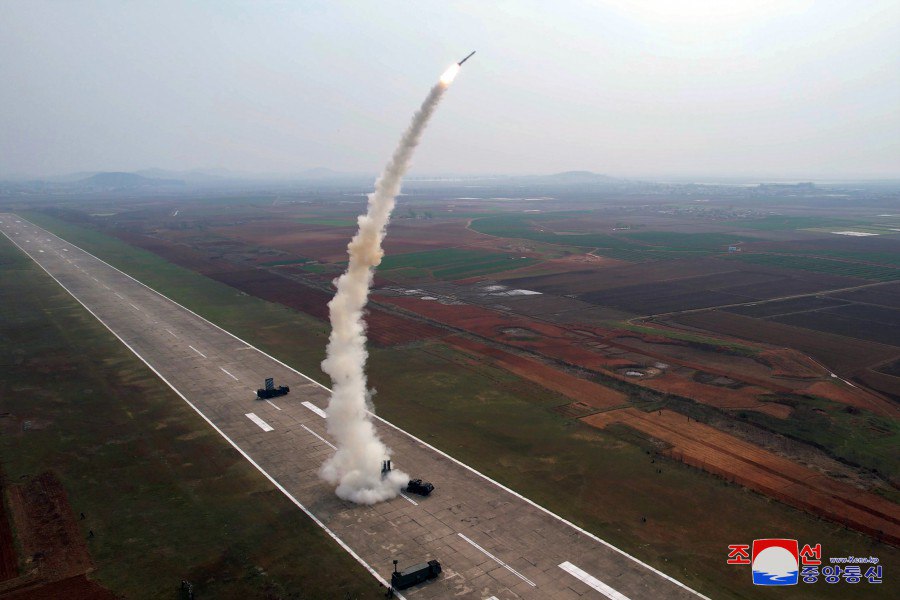The skies above the Pilsung Shooting Range thundered on April 19 as the Republic of Korea Air Force (ROKAF) F-35As and United States Air Force (USAF) F-16Cs engaged in a joint live-fire training exercise.
The two Air Forces executed a simulated strike on North Korean ballistic missile Transporter Erector Launchers (TELs) using GBU-12 Paveway II laser-guided bombs. A video capturing the intensity of the exercise has also surfaced, offering a gripping glimpse into the operation’s precision and lethality.
In one segment of the footage, a Republic of Korea Air Force (ROKAF) F-35A is seen releasing an inert GBU-12 bomb. With remarkable accuracy, the bomb finds its mark, striking a moving target—acting as a North Korean ballistic missile Transporter Erector Launcher (TEL)—at the Pilsung Firing Range.
The successful strike demonstrated the effectiveness of precision-guided munitions in neutralizing high-value targets with precision and efficiency.
South Korea had procured the GBU-12 bombs from the United States as part of the F-35A package. The GBU-12 Paveway II, derived from the Mk 82 500-pound general-purpose bomb, incorporates a nose-mounted laser seeker and fins for guidance, enhancing its accuracy and lethality.
Notably, the Enhanced-GBU-12 (EGBU-12) variant offers dual-mode capability, combining GPS-assisted navigation with precise laser guidance to ensure operational effectiveness in all weather conditions.
This advanced technology equips the ROKAF and USAF with a versatile weapon system capable of engaging moving targets with unparalleled accuracy.
A representative from the South Korean Air Force said that the joint training exemplifies the robust readiness of the ROK-US military alliance. It underscores the collective ability to respond swiftly and decisively to provocations.
Similarly, a US Air Force officer reiterated the strength of the bilateral partnership, emphasizing the shared commitment to mutual defense and security.
The live-fire exercise was conducted as part of the Korea Flying Training, which commenced on April 12. During this exercise, the two countries mobilized a diverse fleet of approximately 25 types of aircraft, including US F-35B and South Korean F-35A stealth fighters.
The training program, which also involves personnel from the US Army and Marine Corps, focuses on enhancing interoperability, refining precision strike capabilities, and conducting simulated combat scenarios, including search and rescue operations and mass paratrooper airdrops.

North Korea Tests ‘Super-Large Warhead’ & Anti-Ship Missile
The joint aerial exercise between South Korean and US forces unfolds against the backdrop of North Korean leader Kim Jong Un’s intensified weapons demonstrations.
Recent displays of military prowess from Pyongyang have featured the testing of increasingly powerful missiles, with a particular focus on targets within the US mainland and strategic locations in the Pacific region.
On April 20, North Korea announced that it had conducted tests of what it termed a “super-large” cruise missile warhead and a new anti-aircraft missile in a western coastal area, further expanding its military capabilities in response to deepening tensions with the United States and South Korea.
According to North Korean state media, the country’s missile administration conducted a “power test” for the warhead designed for the Hwasal-1 Ra-3 strategic cruise missile on April 19, along with a test launch of the Pyoljji-1-2 anti-aircraft missile.
The tests purportedly achieved an unspecified “certain goal,” with photos released by the North’s official Korean Central News Agency showing at least two missiles being fired off launcher trucks at a runway.

Cruise missiles pose a distinctive threat due to their ability to fly at low altitudes and maneuver unpredictably, rendering them highly challenging to intercept using conventional air and missile defense systems.
While North Korea has conducted similar tests in the past, the naming of these specific cruise and anti-aircraft missiles suggests potential technological advancements.
Despite assertions from KCNA that these tests were part of routine military development activities, they occur amidst a fraught international landscape. Unlike ballistic weapons, North Korea’s arsenal of cruise missiles falls outside the scope of United Nations sanctions imposed on Pyongyang.
North Korea’s array of ballistic missiles and cruise missiles pose a significant challenge to regional missile defense systems, highlighting the regime’s ongoing efforts to bolster its offensive capabilities.
Moreover, experts suggest that North Korea’s cooperation with Russia in areas such as anti-aircraft missile technology could further enhance its military prowess, potentially complicating regional security dynamics.
On the other hand, in response to North Korea’s provocations, the United States, South Korea, and Japan have intensified their joint military training and deterrence strategies, leveraging strategic US assets to maintain a robust defense posture.
- Contact the author at ashishmichel(at)gmail.com
- Follow EurAsian Times on Google News




